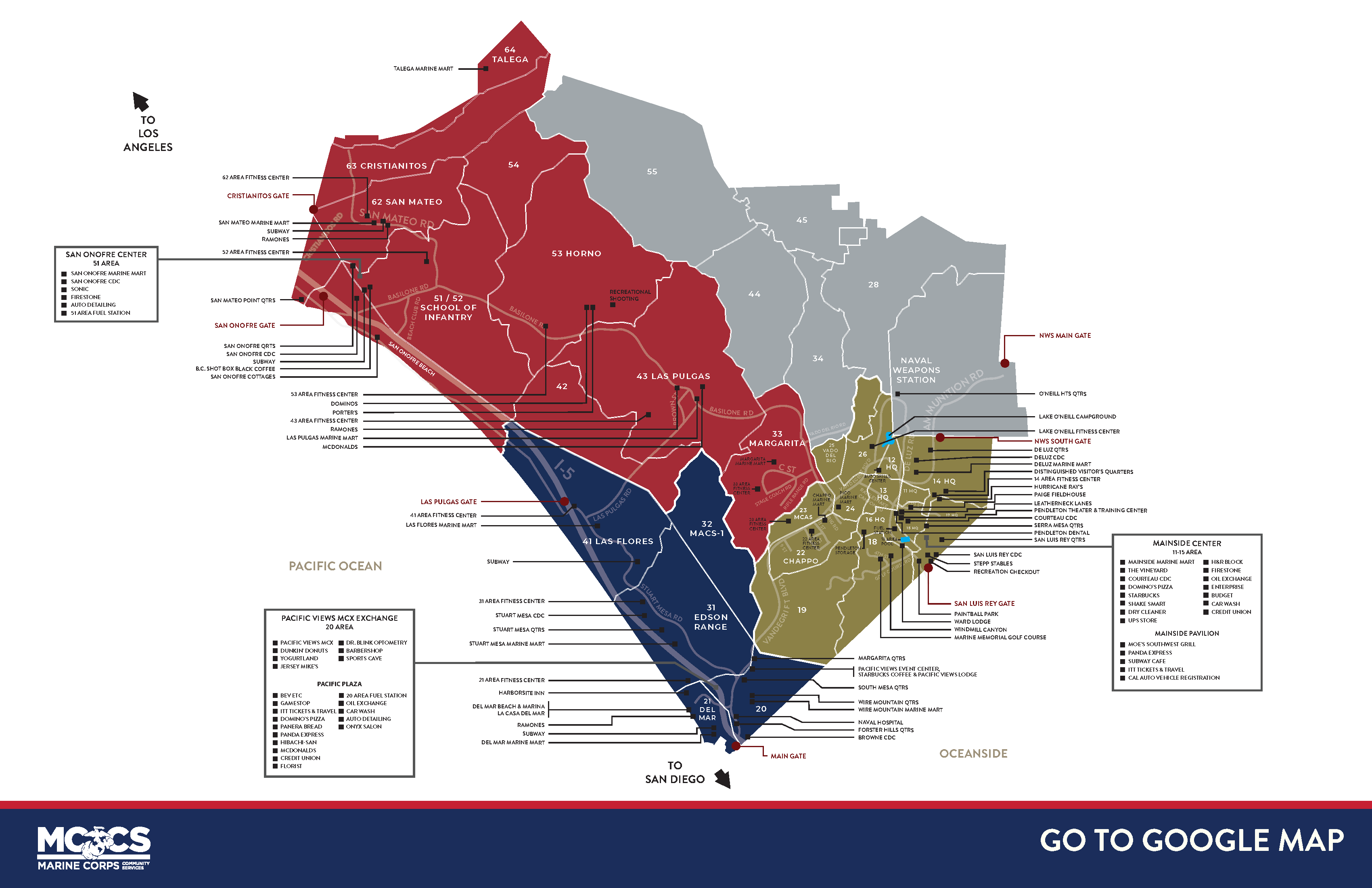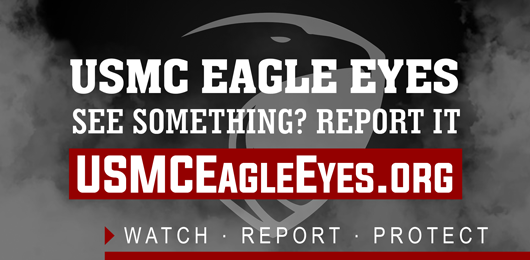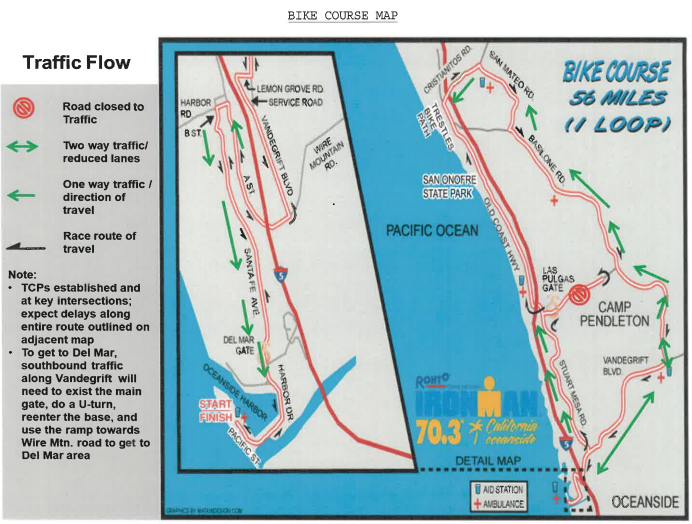Marine Corps Base Camp Pendleton, the Corps' largest West Coast expeditionary training facility, encompasses more than 125,000 acres of Southern California terrain.
Located approximately 38 miles from downtown San Diego in North County and 82 miles south of Los Angeles, Camp Pendleton has been the largest employer in North San Diego County for more than 60 years.
Camp Pendleton is one of the Department of Defense's busiest installations and offers a broad spectrum of training facilities for many active and reserve Marine, Army and Navy units, as well as national, state and local agencies.
The Base is home to the I Marine Expeditionary Force, 1st Marine Division, 1st Marine Logistics Group and many tenant units, including Marine Corps Installations-West, 1st Marine Raider Battalion, Wounded Warrior Battalion-West, Marine Corps Air Station Camp Pendleton, Marine Aircraft Group 39, Marine Corps Tactical Systems Support Activity, Marine Corps Recruit Depot San Diego's Weapons & Field Training Battalion, Marine Corps and Army Reserve Forces, the Navy's Assault Craft Unit 5, a Naval Hospital and 1st Dental Battalion.
The coastal and mountain terrain support a variety of military training. Fleet Marine Force units use Camp Pendleton's ranges and training areas to maintain combat readiness.
The Base also provides specialized schools and training as directed by the Commandant of the Marine Corps. Several schools are located on Camp Pendleton including Assault Amphibian Schools Battalion, School of Infantry-West, Field Medical Training Battalion - West and Marine Corps University. Following recruit graduation, enlisted Marines receive basic infantry training at the School of Infantry-West before assignment to other units throughout the Corps.
More than 38,000 military family members occupy base housing complexes. However, with a daytime population of 70,000 military and civilian personnel, the Marines, Sailors and their families rely on the surrounding communities for retail goods and services not available on Base.
The neighboring cities of Carlsbad, Escondido, Fallbrook, Oceanside, San Clemente, San Marcos, Temecula and Vista provide employment, housing and services needed by the Camp Pendleton population.
Camp Pendleton contains the largest undeveloped portion of coastline in Southern California. The ecosystem includes beaches, bluffs, mesas, canyons, mountains and Southern California's only free-flowing river. There are more than 1,000 species of plants, fish and animals, some of which are either threatened or endangered. Wildlife and habitat protection is a top concern of all who live, work and train at Camp Pendleton.
MISSION
MCB CAMPEN commands and controls assigned Marine Corps installations in order to support the operating forces, tenant commands, military personnel, and families. MCIWEST-MCB CAMPEN operates a training base that promotes the combat readiness of the operating forces and the missions of other tenant commands by providing training venues, facilities, services and support in order to be responsive to the needs of Marines, Sailors and their families.
VISION
Marine Corps Base Camp Pendleton supports today’s fight and prepares for tomorrow’s future. We will be a superior Marine Corps training base by expanding training opportunities, maximizing allocated resources, modernizing base infrastructure and providing superior service and support.
Visit some of the historical sites or learn more about Camp Pendleton's history online.
Please check back periodically as new and updated content will be added.

Of all the Marine Corps bases throughout the world, Camp Pendleton has a most intriguing past filled with historical charm and vibrancy. Spanish explorers, colorful politicians, herds of thundering cattle, skillful vaqueros and tough Marines have all contributed to the history of this land.
In 1769, Capt. Gaspar de Portola, a Spaniard, led an expeditionary force northward from Baja, or lower California, seeking to find a ship-worthy port. On July 20 of that same year, the expedition arrived at a location now known as Camp Pendleton, the land was baptized in the name of Santa Margarita as it was her holy day.
During the next 30 years, 21 Franciscan missions were established in California. The most productive was Mission San Luis Rey, just south of present-day Camp Pendleton with control over the Santa Margarita area.
In 1821, following Mexico’s independence from Spain, the Californios became the new ruling class of California; many were first generation descendants of the Portola expedition. The Mexican governor awarded land grants and ranchos to prominent businessmen, officials and military leaders. In 1841, brothers Pio and Andres Pico became the first private owners of Rancho Santa Margarita. More land was later added to the grant, changing the name to Rancho Santa Margarita y Las Flores which remained until the Marine Corps acquired it in 1942.
In 1863, John Forster gained the deed to the ranch from his brother-in-law Pio Pico. During Forster’s tenure, the ranch house was expanded and developed into a thriving cattle industry.
After a string of droughts and a fence law that forced Forster to construct fencing around his extensive rancho lands, the rancho was purchased and managed by partners James Flood and Richard O’Neill. Under the guidance of O’Neill’s son, Jerome, the ranch began to net a profit of nearly half a million dollars annually, and the house was modernized and furnished.
Although both the Army and the Marine Corps were looking for land for a large training base, it was announced April of 1942 that the rancho was about to be transformed into the largest Marine Corps base in the country. The Marine Corps paid $4,239,062 for the rancho.
Expansion of all U.S. armed forces was authorized by President Franklin D. Roosevelt's proclamation for an unlimited national emergency on May 27, 1941, and an immediate need for additional amphibious force training facilities led to the construction of Camp Pendleton.
After five months of construction, the first troops to occupy the new Base were the 9th Marine Regiment with the 1st Battalion, 12th Marines, who marched from Camp Elliott in San Diego to Camp Pendleton. President Franklin D. Roosevelt dedicated the Base on Sept. 25, 1942, in honor of World War I Major General Joseph H. Pendleton who had long advocated the establishment of a West Coast training base.
The first women Marine reservists arrived in 1943 to help keep Base administration running smoothly. The O’Neill’s blacksmith shop became the Ranch House Chapel and opened primarily for their use.
By October 1944, Camp Pendleton was declared a "permanent installation" and by 1946, became the home of the 1st Marine Division.
Camp Pendleton trained the country's fighting force for the Korean and Vietnam Wars, with approximately 200,000 Marines passing through the Base on their way to the Far East.
The Corps broadened its capabilities during the 1980's from "amphibious" to "expeditionary" by combining infantry, armor, supply and air power. Troops and equipment could now be deployed halfway around the world in only days as part of a self-sustaining air-ground team. This successful use of military power has been demonstrated through Marine Corps operations in Grenada, Panama, the Persian Gulf, Somalia, Bosnia, Haiti Afghanistan and Iraq.
Camp Pendleton continued to grow with renovations, replacing its original tent camps with more than 2,600 buildings and 500 miles of roads.
Efforts today preserve the rich heritage of Camp Pendleton's founders and the more than 230 years of Marine Corps history. Streets and sites have been named in honor of military war heroes and battles, the locations originally christened by Spanish explorers and missionaries continue that heritage and the ranch’s cattle brand has become Camp Pendleton’s logo. The original Santa Margarita Ranch House has been declared a National Historic Site where the Base hosts tours to share its history.
Leaders
Brigadier General Nick I. Brown
Commanding General, Marine Corps Installations West - Marine Corps Base Camp Pendleton...
Read Biography
Official Photo
Colonel John L. Medeiros, Jr
Deputy Commander, Marine Corps Installations West - Marine Corps Base Camp Pendleton...
Read Biography
Official Photo

The I Marine Expeditionary Force is composed of the 1st Marine Division, 3rd Marine Aircraft Wing, 1st Marine Logistics Group, 11th, 13th and 15th Marine Expeditionary Units, the MEF Headquarters Group, 1st Air Naval Gunfire Liaison Company and the 1st Marine Expeditionary Brigade.
Other major commands on base include: Marine Corps Installations-West, 1st Marine Special Operations Battalion, Marine Corps Tactical Systems Support Activity, Wounded Warrior Battalion West, Marine Corps Recruit Depot San Diego's Weapons & Field Training Battalion, Marine Corps and Army Reserve Forces, Navy's Assault Craft Unit 5, Naval Hospital Camp Pendleton, and the 1st Dental Battalion.
These commands, with more than 42,000 active duty personnel, work together to form a flexible, capable readiness group able to deploy worldwide at a moment's notice to support numerous DoD missions worldwide.
Approximately 2,000 personnel from six units completed their annual two-week training along with approximately 19,500 personnel from 200 units that completed their weekend reserve training. A Marine Air Ground Task Force level exercise and an Amphibious Orientation Training were also conducted, which consisted of nine units and more than 2000 reservists.
Retirees
More than 77,000 retired military personnel reside within a 50-mile radius of Camp Pendleton with all the privileges to Base recreation facilities, commissary, exchange and medical services.
Reservists
Camp Pendleton is a major training base for reserve units and civilian organizations. In addition to thousands of Marine reservists trained at the School of Infantry, nearly 23,500 reserve personnel work and train via the Mobilization Support Battalion each year. Camp Pendleton hosts training areas, firing ranges, gas chambers, swimming pools, Urban Terrain facilities, rappel towers, and several military occupational specialty schools. Included in these numbers are civilian organizations that use Camp Pendleton's vast training facilities. Some groups taking advantage of Camp Pendleton for training are the Federal Bureau of Investigation, U.S. Customs, Boarder Patrol, Orange County Sheriff's Dept., Los Angeles Police Dept., Young Marines, Sea Cadets, and Devil Pups. In addition, Marine reservists train with units assigned full-time to Camp Pendleton and most of them reside and work in the surrounding communities. Reserve units include:
Marine Corps
4th LAR Battalion ,3rd Civil Affairs Group, 4th MLG (FWD West), MAG 46, Detachment A, MAG 42, HMLA-775, 31st Interrogator-Debriefer Team, I MEF Command Element IMA Detachment Pendleton.
Army
478th Transportation Company 316th Quarter Master Company 1394th Deployment Support Brigade Joint Reserve Intelligence Center.

Force Protection Condition (FPCON) is A Department of Defense (DoD) approved system standardizing DoD’s identification of and recommended preventive actions and responses to terrorist threats against U.S. personnel and facilities. The system is the principal means for a commander to apply an operational decision on how to protect against terrorism and facilitates coordination among DoD Components and support for antiterrorism activities.
FPCON
The DoD FPCON consists of five progressive levels of increasing Anti-Terrorism protective measures. The implementing measures for each level are detailed in sections E4.4. and E4.5. The circumstances that apply and the purposes of each protective posture are as follows:
FPCON NORMAL
Applies when a general global threat of possible terrorist activity exists and warrants a routine security posture. At a minimum, access control will be conducted at all DoD installations and facilities.
FPCON ALPHA
Applies when there is an increased general threat of possible terrorist activity against personnel or facilities, and the nature and extent of the threat are unpredictable. ALPHA measures must be capable of being maintained indefinitely.
FPCON BRAVO
Applies when an increased or more predictable threat of terrorist activity exists. Sustaining BRAVO measures for a prolonged period may affect operational capability and military-civil relationships with local authorities.
FPCON CHARLIE
Applies when an incident occurs or intelligence is received indicating some form of terrorist action or targeting against personnel or facilities is likely. Prolonged implementation of CHARLIE measures may create hardship and affect the activities of the unit and its personnel.
FPCON DELTA
Applies in the immediate area where a terrorist attack has occurred or when intelligence has been received that terrorist action against a specific location or person is imminent. This FPCON is usually declared as a localized condition. FPCON DELTA measures are not intended to be sustained for an extended duration.

2025 ironman race
Saturday April 5th IRONMAN 2025 INFOGRAM
Information for the 2025 Ironman event typically held in the month of April will be provided as soon as it is released.

Earth day April 22,2025
Information for Earth Day 2025 will be provided as soon as it is available.
The Community Plans & Liaison Office (CPLO) serves as the Base Commanding General's direct representative with local communities, public elected officials, other government agencies and major landowners surrounding the Base. The CPLO staff also serves as the primary point of contact for any off-Base entities seeking a long-term use of Camp Pendleton land. This office serves in an oversight capacity to encroachment issues that could potentially affect the Camp Pendleton mission or its tenant commands. The staff assist on Base strategic land use planning.
The office works with local, state and federal officials to coordinate planning of mutual interest issues within Southern California. When necessary, the CPLO staff provide information to local community authorities and regional planning agencies about Camp Pendleton land use and its training mission.
CPLO coordinates the assignment of senior Camp Pendleton officials to serve as liaisons with local chambers of commerce, school boards and other community organizations. These assignments assist in enhancing communication with many off-base activities and organizations.
Camp Pendleton opens its doors to the surrounding communities in many other ways. Citizens with an authorized escort may tour the Base or request Marine Corps support through color guards, band, military equipment displays, military police and K-9 dog units.
Marines serving at the Base Community Relations Office also help promote the Adopt-A-School program by uniting an elementary class with a unit on Base. This program allows the students and Marines to work one-on-one to enhance student learning. Many Marines not only volunteer to help with child education programs, but also with sports or other after-school activities.
The Navy-Marine Corps Relief Society is a private, non-profit volunteer organization dedicated to providing temporary financial aid to Marines, Sailors and their families. Assisting with immediate essential needs through disbursement of interest-free loans or grants is the principal activity of the NMCRS. In addition, the NMCRS manages a thrift store on Base to aid Camp Pendleton's personnel. All items are received by donation only and the profits are used to support programs benefiting Camp Pendleton's Marines, Sailors and families.
The American Red Cross is a non-profit organization that provides emergency assistance to service members and their families. These services include 24-hour emergency communications; financial assistance on behalf of the NMCRS for emergency travel; referral and advocacy services; health and welfare inquires; assistance with humanitarian transfers and hardship discharges; health and safety courses such as first-aid, CPR and babysitting.
The Combined Federal Campaign, the only campaign authorized to solicit and collect contributions from federal employees in the workplace, collect more than $350,000 in charitable contributions annually from Marines and Sailors aboard Camp Pendleton for distribution to local and national charities.
CONTACT
Mr. Whitley
Community Planning Liaison Officer (CPLO)
MCB Camp Pendleton, CA
760-725-6445
951-216-0027
A) All Marines who own a motorcycle must attend monthly motor cycle club meetings which are published both in the Plan of the Week and the S-3 training calendar.
B) All Marines are required to attend the Basic Riders Course before riding a motorcycle. See the BN S-3 to reserve a class seat.
Motorcycle Club President GySgt Nguyen (A Co)
760-725-4602
Full or mixed breeds of Pit Bulls, Rottweilers, and canid/wolf hybrids are prohibited aboard Marine Corps installations.
Owners requesting to get their companion animals waived under this policy must ensure their dog passes a nationally recognized temperament test at the owners' expense. Accepted tests include the Canine Good Citizen test (AKC) and the Delta Test (Delta Society). Questionable animals may be referred to a board-certified veterinary behaviorist. If a domestic animal is deemed dangerous or vicious, it will be prohibited from Marine Corps installations. Visitors, sponsors, and their family members WILL NOT bring prohibited canine breeds aboard any Marine Corps installation at any time. In every case, sponsors are fully responsible for their visitors’ pet dogs while aboard Marine Corps installations.
Owners with prohibited dog breeds may bring their pets on base to access services provided by on-base U.S. Army Veterinary Treatment Facilities. Prohibited breeds may enter Camp Pendleton for the sole purpose of obtaining care and are only permitted to travel immediately to and from the veterinary treatment facility with no other stops aboard the installation authorized.
For more information Contact the Animal Shelter
Building 25132
Hours
Monday - Wednesday 10:00 - 3:30
Thursday - Sunday 10:00 - 4:30
760-725-8120